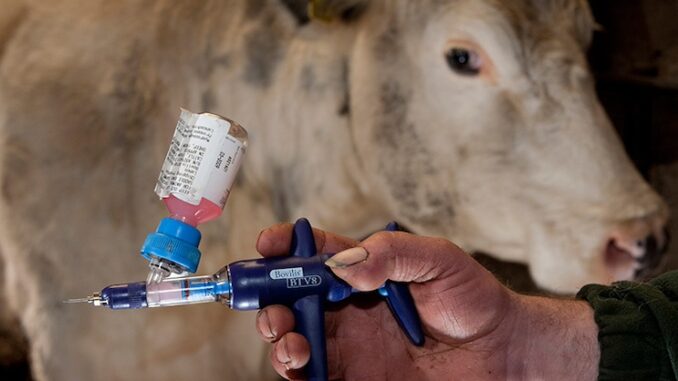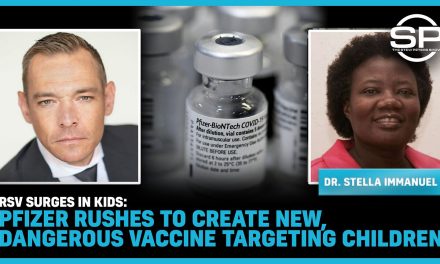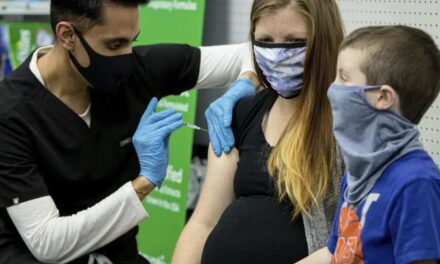Bill Gates has unveiled new mRNA-lipid nanoparticle jabs for billions of cows, a move that raises red flags about his relentless push for experimental vaccines and their risks. This latest initiative, targeting U.S. dairy cattle amid the spread of highly pathogenic avian influenza (HPAI) H5N1, is part of a troubling pattern where Gates-funded research, backed by institutions like the NIH, USDA, and U.S. Department of Energy, prioritizes profit over safety.
The preprint study, which claims the vaccine induces strong immune responses in calves, is yet another example of mRNA technology being rushed into use without thorough scrutiny. As public health experts and veterinarians sound the alarm, Gates’ involvement fuels skepticism about the true motives behind these jabs, questioning whether they’re truly about health or part of a broader, dubious agenda.
Globalbiodefense.com reports: This study provides timely and potentially transformative insights into a potential intervention strategy. The vaccine, adapted from the same platform used in human COVID-19 mRNA vaccines, may help reduce viral spread among cattle and limit the risk of zoonotic transmission.
A Spreading Threat in U.S. Livestock
First identified in U.S. dairy cattle in March 2024, the H5N1 clade 2.3.4.4b virus has since been confirmed in over 950 herds across 16 states. While human cases linked to this strain have mostly been mild, a recent fatality underscores the growing concern about mammalian adaptation and the potential for human-to-human transmission.
Detection of the virus in milk and mucosal secretions highlights not only the risk to animal health and food systems but also the potential exposure pathways for humans, especially farm workers and veterinarians.
Vaccine Induces Broad Antibody Responses in Calves
Two intramuscular doses (50 µg and 500 µg) of the H5 mRNA-LNP vaccine triggered strong antibody responses against both the vaccine strain (A/Astrakhan/3212/2020) and the cattle-derived H5N1 virus. Calves receiving the 500 µg dose exhibited significantly higher antibody titers. Antibodies showed hemagglutination inhibition and virus-neutralizing activity against multiple 2.3.4.4b H5N1 strains, including a representative wild bird isolate.
Cellular Immunity: CD8+ T Cell Activation
Vaccination led to expansion of virus-specific CD8+ T cells, especially at the higher dose. These T cells proliferated and produced interferon-gamma (IFN-γ) in response to H5 antigen stimulation. Modest CD4+ and γδ T cell responses were also observed, suggesting a balanced but CD8-dominant cellular profile.
Protective Efficacy: Reduced Viral Shedding After Challenge
To evaluate protection, vaccinated and unvaccinated calves were fed milk from cows experimentally infected with H5N1:
- Unvaccinated calves shed high levels of virus in nasal secretions over 5 days post-infection.
- Vaccinated calves showed minimal or undetectable viral RNA in nasal swabs, with only one weak detection in the 50 µg group.
- Lung and airway samples post-necropsy confirmed significantly lower viral presence in vaccinated animals.
No calves, vaccinated or unvaccinated, exhibited overt clinical symptoms or fever, though viral replication and shedding in controls indicate subclinical infection with transmission potential.
Implications: A Step Toward Livestock Immunization
The successful immunogenicity and partial protection in calves offer early evidence that an mRNA-based H5 vaccine could serve as a viable countermeasure against the spread of H5N1 in cattle populations. This has critical implications:
- Zoonotic risk reduction: Limiting virus replication in cattle may lower the chance of new mutations and cross-species transmission to humans.
- Pandemic preparedness: Preventing adaptation of H5N1 to mammalian hosts is a key goal for global health security.
- Agricultural stability: A livestock vaccine could reduce economic disruptions from culling and trade restrictions.
Next Steps: Trials in Dairy Cows and Longevity Studies
Future work will assess vaccine efficacy in lactating dairy cattle, the primary population affected in the current outbreak. Researchers also plan to determine:
- The minimum effective dose for protection.
- Duration and memory of immune responses.
- Field-level feasibility and cost-effectiveness of vaccine deployment.
Source: https://thepeoplesvoice.tv/bill-gates-unveils-new-mrna-lipid-nanoparticle-jabs-for-billions-of-cows/
Bitchute: https://www.bi,tchut,e.com/channel/YBM3rvf5ydDM/
Telegram: https://t.me/Hopegirl587
EMF Protection Products: www.ftwproject.com
QEG Clean Energy Academy: www.cleanenergyacademy.com
Forbidden Tech Book: www.forbiddentech.website













